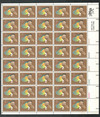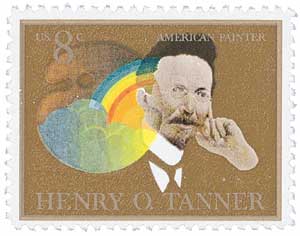
# 1486 - 1973 8c Henry O. Tanner
1973 8¢ Henry O. Tanner
American Arts
Issue Date: September 10, 1973
First City: Pittsburgh, PA
Quantity Issued: 146,008,00
Birth Of Henry O. Tanner
Tanner was the son of an African Methodist Episcopal minister. His parents had escaped slavery on the Underground Railroad as children. They gave him the middle name “Ossawa” in honor of the Kansas town Osawatomie, where abolitionist John Brown fought a battle against the pro-slavery Border Ruffians.
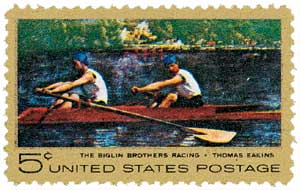
Tanner’s family moved to Philadelphia when he was young, where his father befriended Frederick Douglass. In 1879, Tanner was admitted to the Pennsylvania Academy of the Fine Arts, as its first black student. He was particularly inspired by his professor, Thomas Eakins, who counted Tanner among his favorite students. In fact, 20 years later Tanner was one of just a handful of students that Eakins would paint.
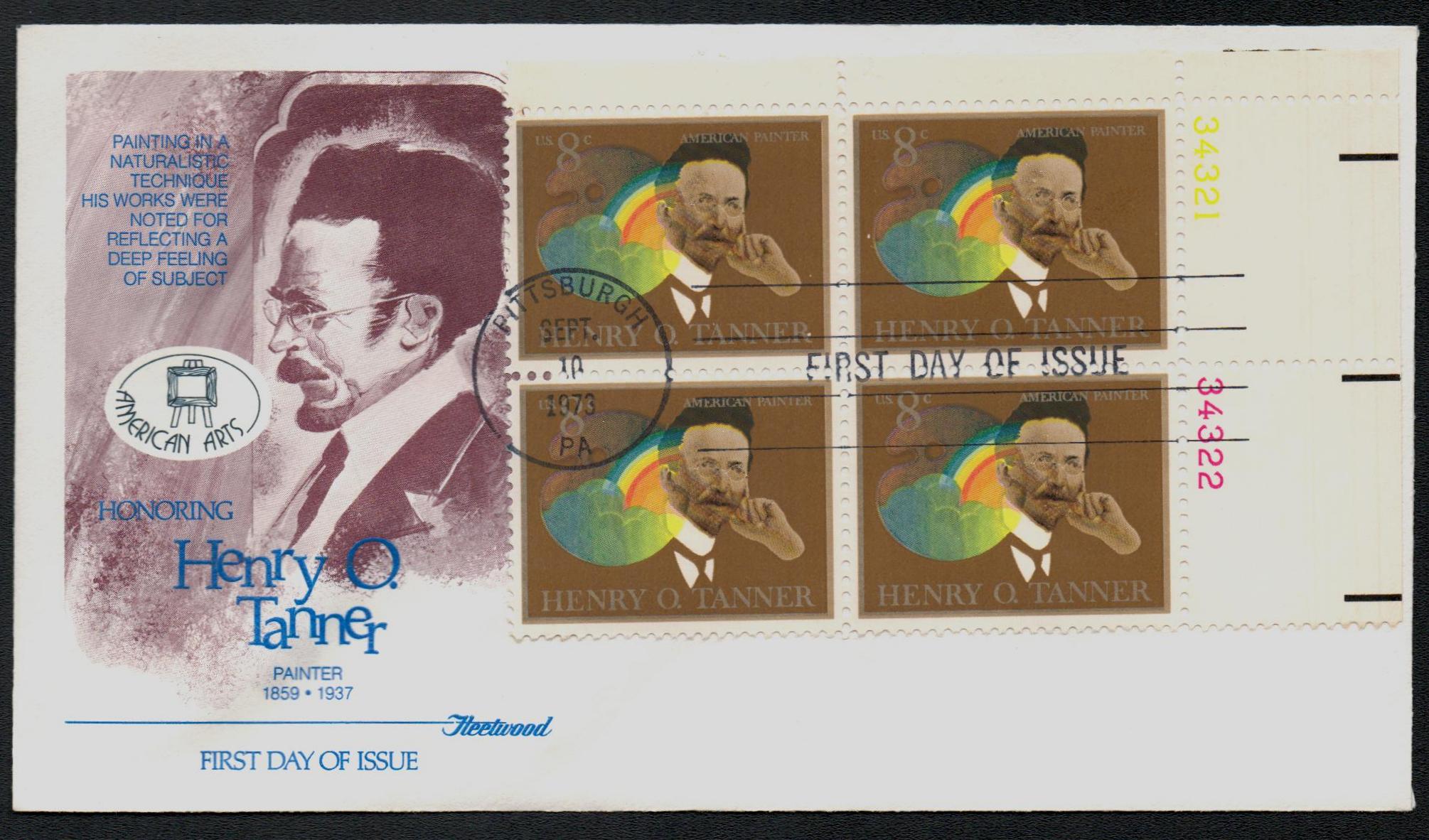
While Tanner enjoyed studying at the academy, he struggled with racism and longed to go to Europe to escape prejudice. He opened a photography studio and taught drawing at Clark College in Atlanta before going to Paris in 1891 to study at the Académie Julian. Tanner felt more at ease in Paris and would spend most of the rest of his life there.
Tanner studied under famed artists including Jean Joseph Benjamin Constant and Jean-Paul Laurens. He also spent a great deal of time at the Louvre, studying the works of Gustave Courbet, Jean-Baptiste Chardin and Louis Le Nain. Tanner then made his home at the Étaples art colony in Normandy. During this time he began to transition from painting scenes of the sea to biblical images. His 1896 painting, Daniel in the Lions’ Den, was accepted into the Salon and The Resurrection of Lazarus helped to establish him as one of France’s top artists.
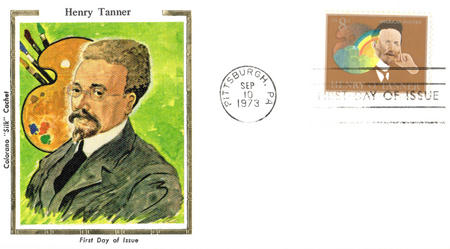
Tanner’s The Resurrection of Lazarus also inspired art critic Rodman Wanamaker to sponsor him on an expense-paid trip to the Middle East. The trip was designed to allow Tanner to see the environment firsthand. Tanner explored mosques and biblical sites in Palestine, blending with the population and learning their character. Tanner’s subsequent work had an air of spirituality and mystique.

Tanner returned to the US for a short visit in 1893. During this trip he painted his most famous work, The Banjo Lesson. It’s considered a masterpiece both for its masterful painting and its realistic depiction of a grandfather teaching his grandson to play the banjo.
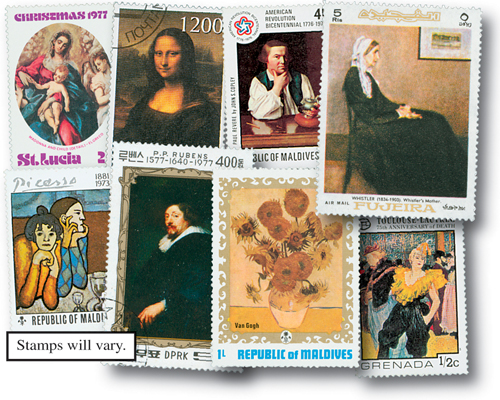
Tanner worked for the Red Cross Public Information Department during World War I, where he painted images from the front lines. In 1923, Tanner was made a Chevalier of France’s Legion of Honour, which he considered the greatest honor of his career. Tanner died in Paris on May 25, 1937. His work, Sand Dunes at Sunset, Atlantic City, is displayed in the Green Room at the White House. It’s the first painting by an African-American artist to be acquired for the White House’s permanent collection.
Click here to view some of Tanner’s paintings.
1973 8¢ Henry O. Tanner
American Arts
Issue Date: September 10, 1973
First City: Pittsburgh, PA
Quantity Issued: 146,008,00
Birth Of Henry O. Tanner
Tanner was the son of an African Methodist Episcopal minister. His parents had escaped slavery on the Underground Railroad as children. They gave him the middle name “Ossawa” in honor of the Kansas town Osawatomie, where abolitionist John Brown fought a battle against the pro-slavery Border Ruffians.

Tanner’s family moved to Philadelphia when he was young, where his father befriended Frederick Douglass. In 1879, Tanner was admitted to the Pennsylvania Academy of the Fine Arts, as its first black student. He was particularly inspired by his professor, Thomas Eakins, who counted Tanner among his favorite students. In fact, 20 years later Tanner was one of just a handful of students that Eakins would paint.

While Tanner enjoyed studying at the academy, he struggled with racism and longed to go to Europe to escape prejudice. He opened a photography studio and taught drawing at Clark College in Atlanta before going to Paris in 1891 to study at the Académie Julian. Tanner felt more at ease in Paris and would spend most of the rest of his life there.
Tanner studied under famed artists including Jean Joseph Benjamin Constant and Jean-Paul Laurens. He also spent a great deal of time at the Louvre, studying the works of Gustave Courbet, Jean-Baptiste Chardin and Louis Le Nain. Tanner then made his home at the Étaples art colony in Normandy. During this time he began to transition from painting scenes of the sea to biblical images. His 1896 painting, Daniel in the Lions’ Den, was accepted into the Salon and The Resurrection of Lazarus helped to establish him as one of France’s top artists.

Tanner’s The Resurrection of Lazarus also inspired art critic Rodman Wanamaker to sponsor him on an expense-paid trip to the Middle East. The trip was designed to allow Tanner to see the environment firsthand. Tanner explored mosques and biblical sites in Palestine, blending with the population and learning their character. Tanner’s subsequent work had an air of spirituality and mystique.

Tanner returned to the US for a short visit in 1893. During this trip he painted his most famous work, The Banjo Lesson. It’s considered a masterpiece both for its masterful painting and its realistic depiction of a grandfather teaching his grandson to play the banjo.

Tanner worked for the Red Cross Public Information Department during World War I, where he painted images from the front lines. In 1923, Tanner was made a Chevalier of France’s Legion of Honour, which he considered the greatest honor of his career. Tanner died in Paris on May 25, 1937. His work, Sand Dunes at Sunset, Atlantic City, is displayed in the Green Room at the White House. It’s the first painting by an African-American artist to be acquired for the White House’s permanent collection.
Click here to view some of Tanner’s paintings.









